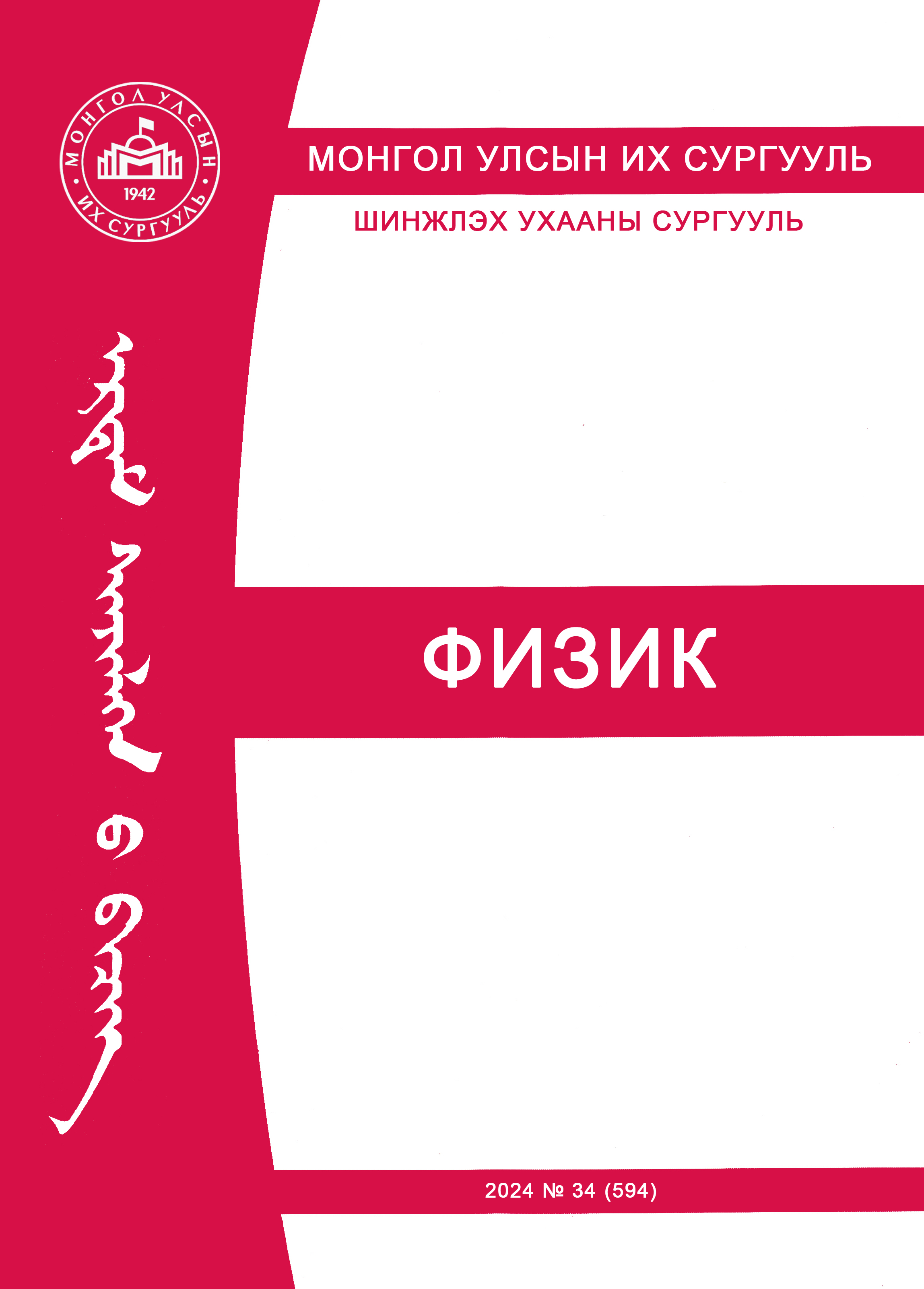Түлшээ үржүүлэн шатаах хурдан реакторын нейтроны тоог нэмэгдүүлэх боломжууд
DOI:
https://doi.org/10.22353/physics.v34i577.5914Keywords:
Түлшээ үржүүлэн шатаадаг хурдан реактор, нейтроны тоо, голомтын материалын хослол, нейтроны тоог нэмэгдүүлэхAbstract
The breed-and-burn fast reactor utilizes depleted or natural uranium fuel and the fissile isotopes generate from fertile isotopes while the fissile ones burn. So, it has an advanced nuclear reactor with technological advantages to utilize uranium resources effectively as well as to reduce the amount of spent nuclear fuel. The integration of neutron number in a reactor core is determined by the difference between the total number of produced and absorbed neutrons, including lost neutrons in a core during burnup. While the neutron balance is high, the fuel breeding process works effectively. The objective of the research work is to find ways to increase the neutron balance in a reactor core.
In the present work, the effect of some design parameters such as pin pitch, cladding thickness and density on neutron balance was studied for infinite one fuel cells with different materials.
Downloads
References
International Atomic Energy Agency, Power reactor information system, https://pris.iaea.org/pris/ (current as of Oct.16, 2020).
F.Heidet and E.Greenspan, Neutron balance analysis for sustainability of breed-and burn reactors, Nucl. Sci. Eng, 171, 13-31 (2012). http://dx.doi.org/10.13182/NSE10-114.
F.Heidet and E.Greenspan, Breed and burn depleted uranium in fast reactors without actinides separation, Proceedings of PHYSOR 2010: Advances in reactor physics to power the nuclear renaissance, Vol. 2, Pittsburgh, Pennsylvania, USA, May 9-14, 2010.
E.Greenspan and F.Heidet, Energy sustainability and economic stability with breed and burn reactors, Prog. Nucl. Energy, 53, 794-799 (2011). doi:10.1016/j.pnucene.2011.05.002.
S.Qvist and E.Greenspan, Design space analysis for B&B reactor cores, Nucl. Sci. Eng, 182, 197-212 (2016).
http://dx.doi.org/10.13182/NSE14-135
K.Hatakeyama and Sh.Ukai, Physical property equations for the design evaluation of ODS ferritic steels, JNS TN9400 2001-108. Japan Nuclear Cycle Development Institute (2001).
C.C.Eiselt, H.Schendzielorz, A.Seubert, B.Hary, Y.de Carlah, P.Diano, B.Perrin. and D.Cedat, ODS materials for high temperature applications in advanced nuclear systems, Nucl. Mat. Energy, 9, 22-28, (2016).
J.Leppanen, Serpent–a Continuous-energy Monte Carlo Reactor Physics Burnup Calculation Code, VTT Technical Research Centre of Finland (2015).
M.B.Chadwick et al., ENDF/B-VII.0: Next Generation Evaluated Nuclear Data Library for Nuclear Science and Technology, Nuclear data sheets, 107,12, 2931 (2006); https://doi.org/10.1016/j.nds.2006.11.001.
N.Kasahara, editor. Fast reactor system design. (Springer, 2017).
R.J.M.Konings, editor. Comprehensive nuclear materials. Volume 2: Material Properties/Oxide Fuels for Light Water Reactors and Fast Neutron Reactors. (Elsevier, 2012).
J.Gilleland, R.Petroski, and K.Weaver, The traveling wave reactor: design and development, Engineering, 2, 88–96 (2016).
O.Sambuu, V.Kh.Hoang, J.Nishiyama, and T.Obara, Neutron balance features in Breed-and-Burn fast reactors, Nucl. Sci. Eng., 196, 322-341, (2022).
D.G.Cacuci, editor, Handbook of Nuclear Engineering. Vol.6, (Springer, 2010).
Downloads
Published
How to Cite
Issue
Section
Categories
License
Copyright (c) 2023 Scientific transaction of the National University of Mongolia. Physics" |"МУИС Эрдэм шинжилгээний бичиг Физик"

This work is licensed under a Creative Commons Attribution-NonCommercial-ShareAlike 4.0 International License.






